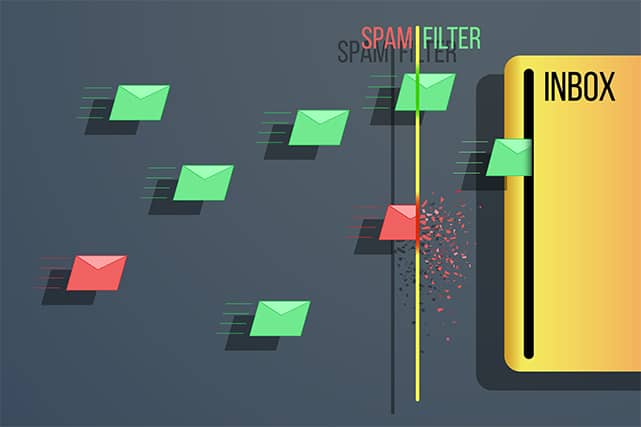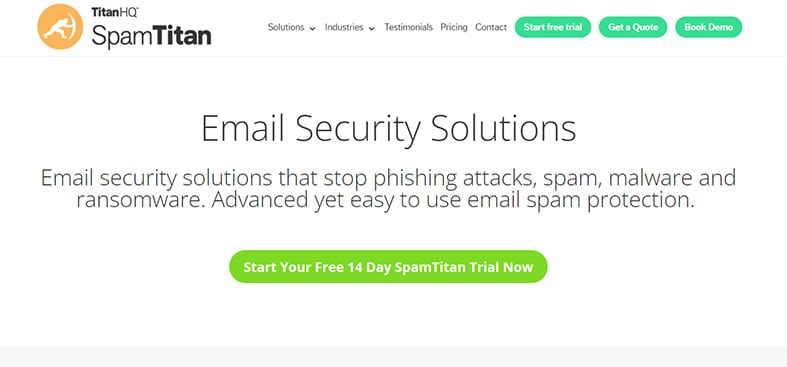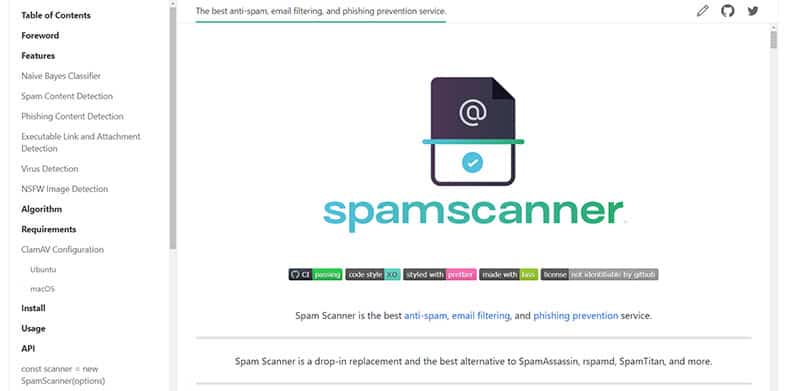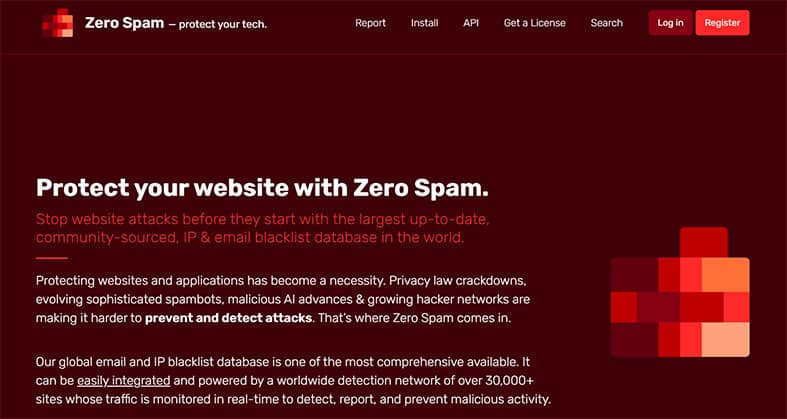People may ask: where is the spam filter used? Several types of spam filters exist to maintain efficient internet security. Commonly, spam filters are applied to incoming and outgoing emails and URLs. Users can host spam filters on the cloud and server computers or incorporate the program into email clients such as Microsoft Outlook. ISPs employ both tactics to protect their customers.

Table of Contents
What is a Spam Filter?
Spam filters are algorithms that identify unsolicited, unwanted, or contaminated email communications and prevent such emails from reaching inboxes. The filter program then deletes or redirects incoming spam to a “junk” inbox.
Where is the Spam Filter used?
Spam filters are used in the user’s email. A spam filter is used in the mailbox to ensure the user’s mailbox is clean and spam-free, conserving productive energy and maximizing work efficiency. Adding a Spam Filter to a mail server prevents spam from ever reaching the user’s mailbox.
Cyber attackers work diligently to uncover and exploit weaknesses, so a spam filter has become essential in recent years. Sending spam and phishing emails is a popular and profitable method for luring users into this lethal trap.
How does the Spam Filter Work?
Spam filters use algorithms to determine whether email messages are dangerous or likely to contain spam. Before establishing that an email is safe, spam filters adopt a “heuristic” technique which applies to hundreds of rules on each email message. Spam filters apply to both incoming and outgoing email traffic.
The spam filter uses several algorithms to assign a score to an email based on various criteria for different sorts of emails. Each rule gives a numeric score to determine the possibility that a message is spam. If the score hits a predetermined threshold, the email is labeled spam and prevented from proceeding.
What are the Different Types of Spam Filters?
The different types of spam filters include the following:

1. Content Filters
The content filter analyzes an email’s content and utilizes this information to determine whether or not the email should be marked as spam. This is made easier by the fact that the content of spam emails is frequently predictable, mainly due to the propensity to have the same fundamental goals: to provide offers, promote explicit content, or otherwise appeal to human emotions, sensations, and desires, such as greed or fear.
2. Blacklist Filters
Blacklist email spam filters function by blocking messages from senders added to a list of known spammers. Since spammers can easily alter email addresses, blacklist filters are frequently updated. If a spammer moves email domains, the email may still be able to bypass the filter until the filter is changed.
3. Header Filters
Header filters check the email’s header to determine if the mail originated from an illegal source. Header filters could include Internet Protocol (IP) addresses commonly employed by spammers. This kind of filter may also contain information indicating that the email is one of many sent simultaneously to pre-organized groups of recipients.
4. Language Filters
Occasionally, spammers target individuals in other countries, and the email is consequently written in a language other than the recipients. In most instances, users will only wish to receive emails in languages that the users are proficient in.
Note:
However, if a business contact or customer from a foreign country contacts the user, there is a potential that the language filter would classify that email as spam; therefore, users should check spam folders when expecting these types of messages.5. Rule-based filters
Rule-based filters enable users to design and apply specified rules to incoming emails. When an email’s content matches one of the conditions, the mail goes straight to the spam folder.
6. Bayesian filter
A Bayesian filter is a statistical method for examining the header and body of an incoming email message to determine its likelihood of being spammed. This compares the usage of terms and phrases linked with spam email.
What are the Best Spam Filters for Emails?
The best spam filters for emails are listed below.
1. SpamTitan
SpamTitan is an advanced and user-friendly spam filtering system ideal for schools, managed service providers, and corporations. The filter can block spam, viruses, dangerous email threats, malware, and ransomware.

This technology can safeguard organizations and schools against email-borne harmful links to websites. The software is considered a highly effective and sophisticated spam filter due to its 99.9% spam capture rate and 0.003% false rate.
2. Spam Scanner
Spam Scanner is a superior alternative to Rspamd, SpamAssassin, SpamTitan, and others for email filtering, phishing protection, and anti-spam protection.

Spam Scanner provides a simple, scalable, performant, and potent API for restricting spam and preventing cyberattacks by implementing the necessary safeguards. Moreover, Spam Scanner is simple to use and maintain.
3. ZeroSpam
ZeroSpam reaches customers through a reseller channel and offers services to large and medium-sized businesses. Because this filter program is a cloud-based service, users do not need to install anything on the computer. ZeroSpam collaborates with various large technology businesses, such as TechData, CPU, Cybersquad, and Micro comp, to resell and distribute these services.

How to Create a Spam Filter?
To create a spam filter, follow the steps below:
- Access the Spam Filters interface in the control panel (cPanel >> Home >> Email >> Spam Filters).
- Verify that Apache SpamAssassin is on. If not, click the Enable Apache SpamAssassin button.
- Access the control panel interface for Global Email Filters (cPanel >> Home >> Email >> Global Email Filters).
- Click the New Filter button and Input the filter’s name in the Filter Name text box.
- Select Spam Bar from the first drop-down selection under Rules. And choose contains from the second menu.
- Enter the spam rating in the field provided. Represent the desired spam rating with plus (+) symbols.
- Choose Deliver to the folder from the menu under Actions and enter the folder’s title.
- To create, save, and activate the spam filter, click Create.
What Triggers Spam Filters?
The following are some examples of Spam Filter triggers:
- Phrases and Words
- Images
- Links
- Engagement with Email and Sender Reputation
- Sending Address
- Duplicate Emails
1. Phrases and Words
Certain words, phrases, and characters in an email’s subject line and body can cause some emails to end up in the spam folder. One incidence may not be sufficient to cause the email to be censored, but the bigger the number of users during the campaign, the greater the likelihood it being classified as spam.
2. Images
Emails containing an excessive number of photos or a single image could activate a spam filter. Using many lines of text to offset the photos can prevent this from occurring. In addition, some filters are sophisticated enough to recognize the substance of an image. Sexual images, for example, are avoided.
3. Links
Spammers commonly deceive people with links, and spam filters monitor the health status of links. Constant Contact emails include link tracking for the click reports, which varies slightly. Avoid using the URL as the link text, as this will never match the URL and has a high probability of triggering a spam filter.
4. Engagement with Email and Sender Reputation
Spammed emails are not just due to the contents of the mail. The reputation of the email sender and the contacts’ interaction with the emails can affect this. A key here is is the emails have persistently low interaction, such as low opens or high bounce rates.
5. Sending Address
Depending on the domain’s DMARC policy, an email sent from a free email address (Gmail, Yahoo, AOL, etc.) may be more likely to enter the spam folder. Although this is a rare occurrence when using Constant Contact. Users might consider authenticating the email to assist ISPs in recognizing the email as genuine and enhancing its reputation as a safe sender.
6. Duplicate Emails
Avoid replicating a previously sent email and resending to the same contact list with identical content and subject lines. This may cause spam triggers.
How to Avoid Email Spam Filters?
There are numerous ways to circumvent the spam filter, including the following:
- Maintain a clean email list
- Develop effective subject lines
- Don’t use spam trigger words
- Maintain the IP’s standing
1. Maintain a clean email list
Users will likely not achieve the desired delivery and open rates if the email list has obsolete addresses or inactive subscribers. When this occurs, the communications are less relevant, affecting whether or not such emails are considered spam.
2. Develop effective subject lines
Subject lines can affect a recipient’s involvement with a product, but initial impressions might influence whether a message gets to the inbox. 69% of email receivers report communications as spam based just on the subject line, so compose subject lines that are relevant, helpful, and low in exclamation points and caps.
3. Don’t use spam trigger words
The most effective strategy to avoid being sent to spam is to avoid acting like spam. Utilizing spam trigger words increases the likelihood of being caught by a spam filter. When composing an email, look for opportunities to demonstrate relevance and value.
4. Maintain the IP’s standing
The reputation of an IP address is a significant element in email deliverability. Suppose the email is from a freshly generated IP address to many recipients. In that case, email service providers such as Gmail, Apple Mail, and Yahoo may hesitate to deliver it to the recipient’s inbox.
Are Spam Filters Effective?
Yes, spam filters are effective. In the same vein, clever spammers disguise header information to make the emails appear authentic, but not all spammers are intelligent. Thus, header analysis alone catches a significant amount of the most blatant spam. Moreover, even spammers adept at concealing information may ignore specific warning indicators.

